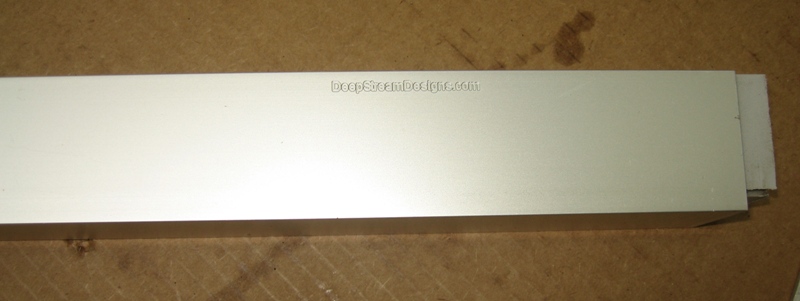While wood-on-wood planter construction will last 3 to 5 years, DeepStream’s Mariner garden planters are engineered to last for decades, giving the lowest cost of ownership over time, and are backed with a Lifetime Structural Warranty.
If your ownership or responsibility for the building where planters will be placed will last more than five years, give serious consideration as to what it will mean in terms of cost and disruption to go back and replace or repair planters, especially on rooftops and balconies, every 3 – 5 years.
 The Mariner test planter shown below, with only an initial waterproofing at our workshop, has been exposed to the Miami sun and rain for with no maintenance for seven years.
The Mariner test planter shown below, with only an initial waterproofing at our workshop, has been exposed to the Miami sun and rain for with no maintenance for seven years.
The same planter shown below after sanding .014″ off the face of the planks and re-waterproofing and wiping down the proprietary marine-anodized legs with mineral spirits.

Wood-on-wood planter construction uses carpentry techniques that fasten wood to wood, and planters tear themselves apart with the expansive forces that wood exerts through repeated wet and dry cycles.
Why? Each wooden plank is cut from a different part of the tree or even different trees. This means each plank has its own differential rate of expansion and warping when wetted. This makes dimensional stability using standard wood-on-wood construction in two dimensions impossible to maintain over time, and shipbuilding techniques and maintenance are far too costly for planter construction. In addition, most wood planters lack adequate isolation from the soil and the deck or sidewalk, which promotes fresh water rot.
For centuries, wood dowels have been inserted into holes drilled into rock, then soaked with water. The expansion force of the wood is thus harnessed to crack blocks off marble and granite for construction, even though the blocks are hundreds of times thicker than the thin wooden dowel.
DeepStream uses proprietary marine anodized legs and stainless steel fasteners to clamp the wood and direct the expansionary so that the wood can expand and contract at different rates without affecting the planter’s structural integrity. The commercial grade rigid plastic liners, mounted on an independent aluminum frame, contain the soil and prevent contact between the soil and the wood.
Aluminum legs are protected and galvanically isolated from a wet deck by using plastic, HDPE, feet. Even stainless steel fasteners are galvanically isolated by using a proprietary dielectric paste so that they may be removed easily years later to replace parts or refinish the planter easily as shown in the before and after pictures below of a 7-year-old planter that only had the original coat of factory waterproofing and no maintenance. This “fresh” look was achieved by sanding off just.014” of the planks exterior.
Comparison of planks after sanding and before waterproofing shown below.
The near flawless proprietary marine anodized leg, show below, after cleaning with mineral spirits. Disassembly for sanding was easy thanks to the proprietary dielectric paste used to prevent corrosion between the stainless steel fasteners and the aluminum leg.


